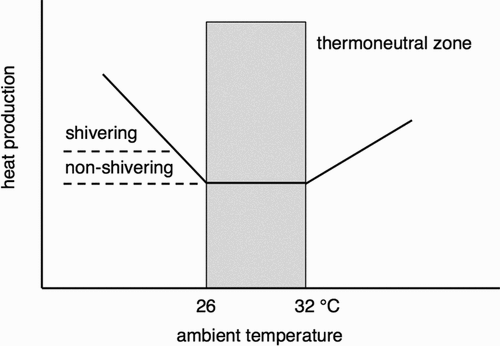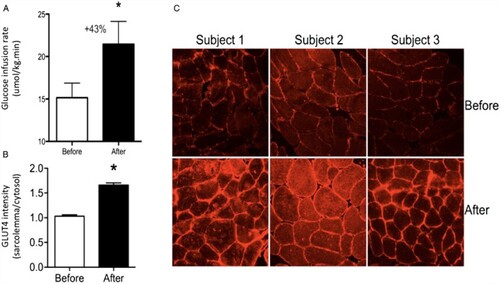Figures & data
Figure 1. The physiological thermoneutral zone is the ambient temperature range where the metabolic rate is at the basal level and there are no regulatory changes in metabolic rate (non-shivering thermogenesis, NST; shivering thermogenesis; or heat-related thermogenesis, HT) or perspiration. In the thermoneutral zone, body core temperature is regulated by skin blood perfusion. The depicted range of the thermoneutral zone is for an average nude person. With clothing, the zone shifts to the left.

Figure 2. Non-shivering thermogenesis (NST) and brown fat activity (arrows) before (PRE) and after (POST) cold acclimation. Source: Figure from van der Lans et al. (Citation2013).

Figure 3. Insulin sensitivity and skeletal muscle glucose transporter type 4 (GLUT4) localization before and after cold acclimation: (A) group mean ± SEM for glucose infusion rate during a hyperinsulinaemic euglycaemic clamp, which is the measurement for insulin sensitivity; (B) GLUT4 translocation in skeletal muscle before and after acclimation in type 2 diabetes patients, as made visible in: (C) representative images of GLUT4 immunostaining of skeletal muscle tissue sections from three individuals in the study. GLUT4 is the insulin-regulated glucose transporter in skeletal muscle fibres. The pictures show that there is more GLUT 4 on the membranes of the cells after cold acclimation. Source: Figure from Hanssen et al. (Citation2015).

